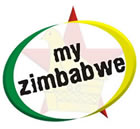The arrival of Elon Musk’s Starlink satellite internet service in Zimbabwe has ignited a flurry of activity within the country’s telecommunications sector, with the government moving swiftly to regulate the new technology and tap into the burgeoning demand for affordable, reliable connectivity.
The Postal and Telecommunications Regulatory Authority of Zimbabwe (POTRAZ) has issued a directive banning the sale of Starlink User Terminals (kits) by telecoms service providers and ordinary dealers without a license. This move comes on the heels of the government’s recent licensing of Starlink to operate in Zimbabwe.
“It is a condition of the Starlink licences that such agencies, dealers and ISPs shall be subject to clearance by POTRAZ,” stated POTRAZ Director General Gift Kallisto Machengete. “This condition applies to both existing and prospective ISPs and Network Operators. The sale or distribution of Starlink User Terminals without appropriate licensing and clearance is, therefore, an offence punishable by law.”
Starlink’s entry into the Zimbabwean market has disrupted the established order, offering lower consumer prices and paying lower license fees than incumbent internet providers. The company’s satellite infrastructure offers superior technology and global coverage, a significant advantage over traditional terrestrial networks.
“On Friday the 6th of September 2024, the Postal and Telecommunications Regulatory Authority of Zimbabwe (POTRAZ) issued two licences to STARLINK ZIMBABWE (Pvt) Ltd, namely the Telecommunication Licence for Network Services and the Internet Services Provider (National) Licence. This Licence-stack authorises STARLINK to provide Internet Services Throughout Zimbabwe using the STARLINK Low Earth Orbit (LEO) Satellite Constellation. In providing Internet Services in Zimbabwe, STARLINK is engaging Agencies, including established Network Operators and Internet Service Providers (ISPs) for the distribution of User Terminals (kits) and as appropriate, the provision of managed end-user services. It is a condition of the STARLINK Licences that such Agencies, Dealers and ISPs shall be subject to clearance by POTRAZ. This condition applies to both existing and prospective ISPs and Network Operators. The sale or distribution of STARLINK User Terminals without appropriate licensing and clearance is, therefore, an offence punishable by law,” reads a statement from POTRAZ.
Mobile and Fixed Operators on the other hand (Econet, TelOne, NetOne) would have paid US $137M and $100M respectively. Well, we don’t know the extent government companies pay these licenses, but that’s a different matter.
Starlink’s disruptive potential extends to mobile operators as well, even though it is not a mobile phone company. The company is rapidly innovating to reduce the size of its antenna, making it portable enough to be carried in a backpack. This allows mobile subscribers to access unlimited internet on the move, potentially bypassing traditional mobile operators for voice calls and data services.
The emergence of Starlink and other LEO satellite services, such as Globalstar and Amazon’s Project Kuiper, offers a compelling solution for providing high-speed internet connectivity in remote areas where terrestrial infrastructure is impractical or too expensive.
“Terrestrial solutions give you very good performance. In South Africa, for example, 99.5% of the population has 4G coverage, which gives you high reliability, performance and capacity. The business case for infrastructure roll-out in areas like the Northern Cape where you only have four people per square kilometre is weak; we would never get our money back,” said Vodacom executive head of innovation Jannie van Zyl.
“So, what happens when we put the network in the sky? You can cover a larger area that way, but since you won’t have the same capacity, your throughput will be lower.”
This game-changing partnership will see Liquid gain exclusive rights to sell and distribute Globalstar’s XCOM RAN private networks 5G access solution in these regions. XCOM Radio Access Network is a multipoint radio system that delivers high capacity and flexibility, making it ideal for private wireless networks. It boasts four times the capacity and superior performance compared to other systems.
While the technologies are complementary, the increasing prevalence of load shedding in Zimbabwe and South Africa has highlighted the reliability challenges faced by terrestrial mobile broadband solutions. Satellites, on the other hand, are not reliant on grid-based power and are less susceptible to vandalism and theft.
However, satellite technology also presents its own set of challenges, primarily in the form of latency.
“The satellite is further from the user device than your terrestrial tower normally would be, so latency is a problem, although Starlink and Kuiper have latencies similar to 3G and 4G,” said Van Zyl. Latency refers to the network roundtrip time for a packet of data.











